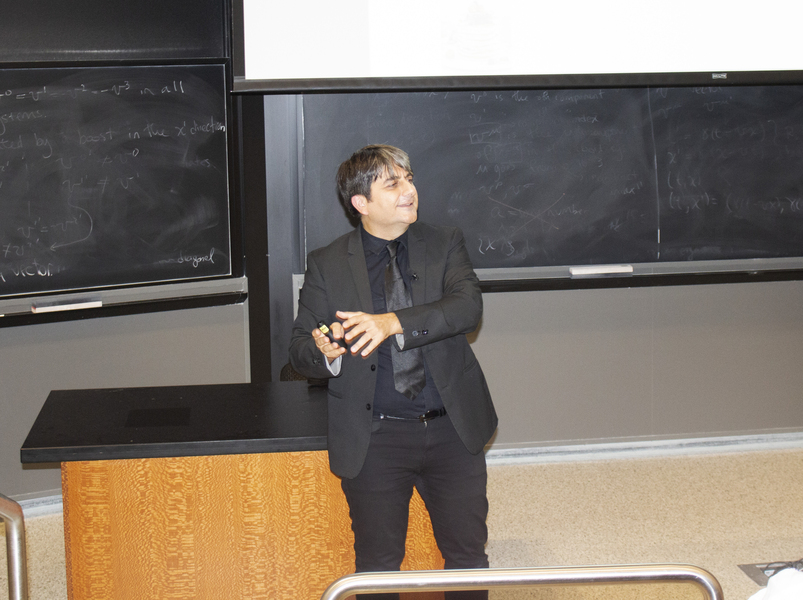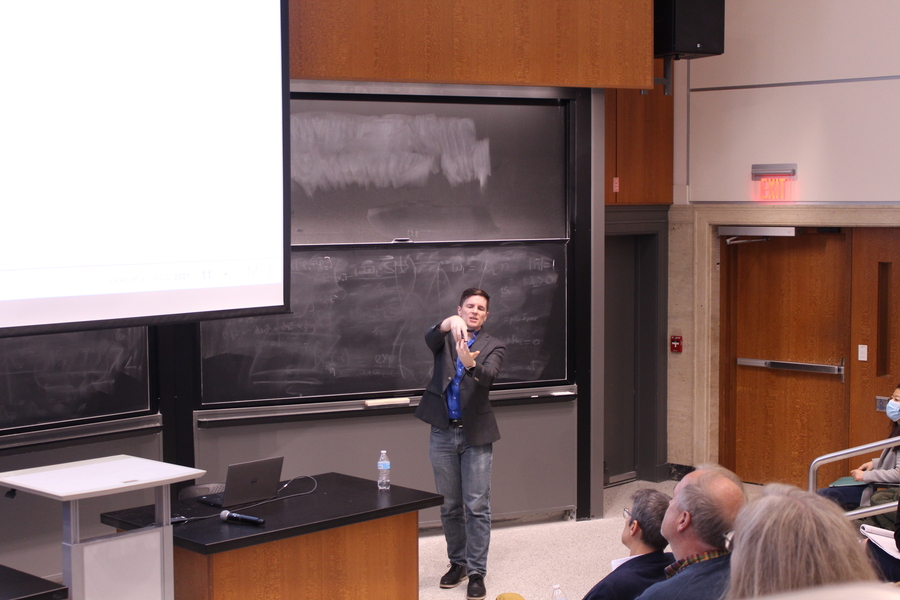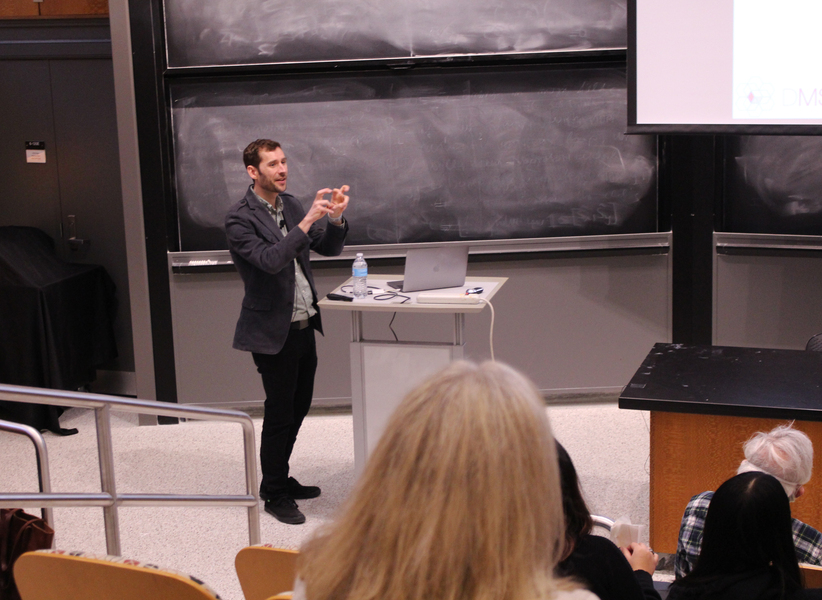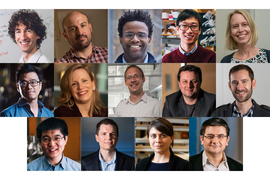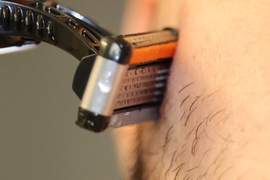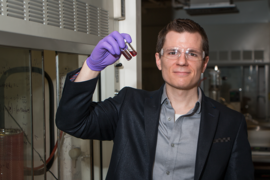Shortly after being awarded tenure in July, Cem Tasan was asked to give a talk about what it took to earn the appointment.
Tasan, the Thomas B. King Associate Professor of Metallurgy in the MIT Department of Materials Science and Engineering (DMSE), would speak directly to his peers, his students, and others in his department and could take any angle he wished. He could talk about the research he did. The relationships and collaborations he made. The students he advised. The dinners he missed at home.
Tasan jumped at the chance. One reason: Academic tenure, a permanent status as a professor and researcher, is not widely understood. Its principal purpose is to safeguard academic freedom, allowing faculty to pursue research and innovation without corporate or political pressure.
“The tenure process is really at the core of an academic institution’s being. At the same time, it’s a process that’s a little bit hidden,” Tasan said of the grueling series of reviews of a researcher’s scholarship, teaching, and service. That’s not because it’s a secret — MIT and other higher-ed institutions lay out the process in detail — “it’s just that people who are not in a tenure track position don’t have much time to think about it.”
“Any activity that we could think of to provide a better glimpse of what’s going on there helps us explain why we are the way we are,” Tasan said.
A new series, called Tenure Talks, debuted this fall with three presentations, each featuring one of DMSE’s newest tenured faculty members: Tasan, James LeBeau, and Robert Macfarlane, all appointed in July, along with 11 others in the School of Engineering. The brainchild of DMSE head Jeffrey Grossman, the series aims to acknowledge the unique human experiences behind the tenure process and celebrate them.
“It’s asking these extraordinary individuals who have done extraordinary research and teaching and service to reflect on the work they’ve done and the path they’ve taken and tell the story of the impact that they’ve made,” Grossman says.
As DMSE plans to continue the series with a new batch of tenured professors in 2023 and beyond, the 2022 speakers reflect on sharing how they got to where they are and the value to themselves, students, and the wider MIT community.
Different journeys, different stories
First, there’s the knowledge transfer from one generation of scholars to another.
“This seven-year journey has had a lot of ups and downs,” Tasan said, speaking of his time at MIT on the tenure track. “If you can be honest about some of the challenges and some of the solutions that you come up with, other people can benefit from that. And that’s good for our society, and that’s good for our community.”
Each talk represented not just a different tenure story, but a different storytelling approach. Tasan, a metals expert, split his presentation in two parts. One was on his lab’s research in in-situ testing of metals and using those insights to develop damage-resistant alloys. A second, more personal section covered strategies he adopted to increase the chances of success in academic research and life.
Macfarlane used his academic transformation from a trained chemist to a materials scientist to explain the groundbreaking, multidisciplinary work he and his research group are doing in programmable matter. And LeBeau detailed innovative data analysis techniques he and his team are developing in electron microscopy to better understand material properties.
LeBeau said the different approaches illustrate that no route to tenure is the same, and that different problems require different solutions. “There are multiple ways to be successful. I think each of us followed our own path,” he said. “You don’t want to be a follower in this profession.”
And every journey will have its difficulties, Tasan said. “There’s no path that’s full of roses,” Tasan said. “But if you work hard and you’re in an environment which helps you grow, then things will be fine too.”
Prafull Pandey, a postdoc in Tasan’s group, found Tasan’s talk about the rigors of academic life helpful. His top takeaway was a tip on how to balance work and home life. Tasan said careful organization and prioritization are key.
“He’s very disciplined,” Pandey says. He playfully muses: “Sometimes I get curious, whenever I send him an email, I get the reply — whether it is three in the morning or five or eight or nine at night. When does he sleep?”
It takes a research lab
Aside from giving guidance to aspiring scholars, the talks serve another useful function, Grossman says. They give people the chance to see the full arc of a researcher’s work and the impact it’s making.
“I think that was great for both faculty and students to see, ‘Oh, this isn’t just a paper or a project. This is a vision, a research vision — and it’s moving the needle in the field,’” Grossman says.
For Macfarlane, sharing his story was a chance to highlight how different people with different perspectives can come together and do important work. He recalled his early days at DMSE as a chemist transitioning to materials science, which incorporates elements from multiple fields, including chemistry. Chemists and materials scientists use different words for the same things, he found, or they use the same words and mean different things.
“The tenure process for me was one of reconciling, and finding that middle ground, and using it as a way to tackle new research questions that I probably would not have thought of other ways,” Macfarlane said.
Today the Macfarlane Lab draws from a deep knowledge of chemistry and materials science as well as the variety of disciplines represented by its grad students and postdocs to enable new ways of developing materials.
LeBeau also stressed the importance of working together for a common purpose.
“Our groups are nothing without our students and postdocs,” LeBeau said. “I try to reiterate to the students, ‘You’re not working for me. You’re working with me.’ And I think that is a very important message to get across.”
Following each talk was a reception where students, faculty, and staff could mingle. Pablo Leon, a DMSE graduate student in Professor Rafael Gómez-Bombarelli’s lab, attended all three events. For him, they were a great way to get to know the department’s faculty better — to hear them talk about their research and the decisions they made.
“They highlighted ‘This is a cool professor’ but also ‘Here are their journeys, and this is how they got here.’ Such a big thing,” Leon said. “Then also I have friends in their groups — I feel like I know them a little bit more when they’re talking about their research. I’m like, ‘Yeah, I remember that from the talk.’”
